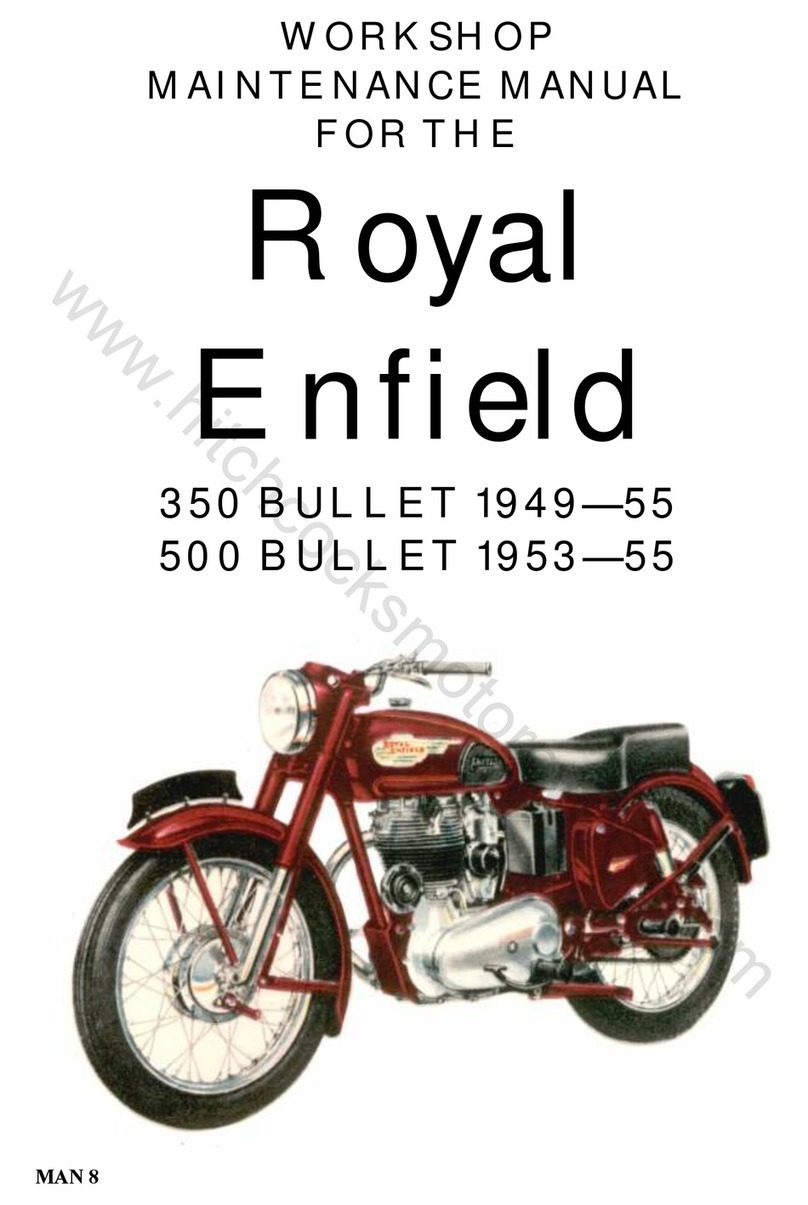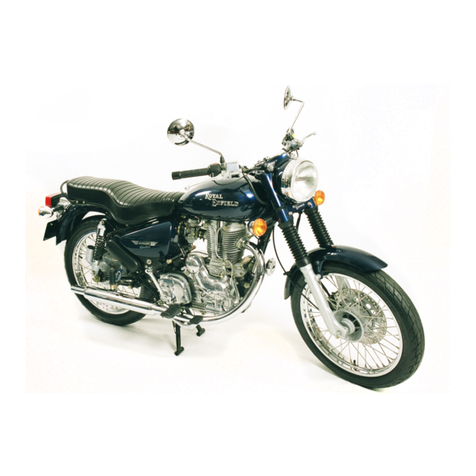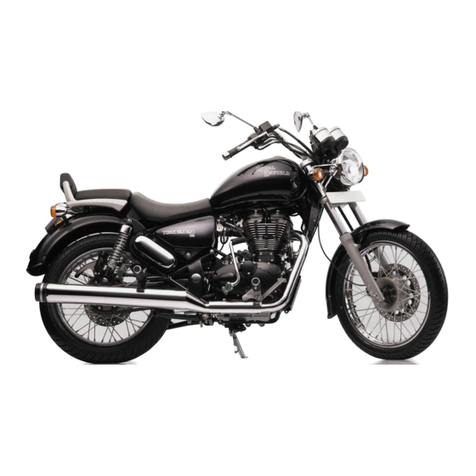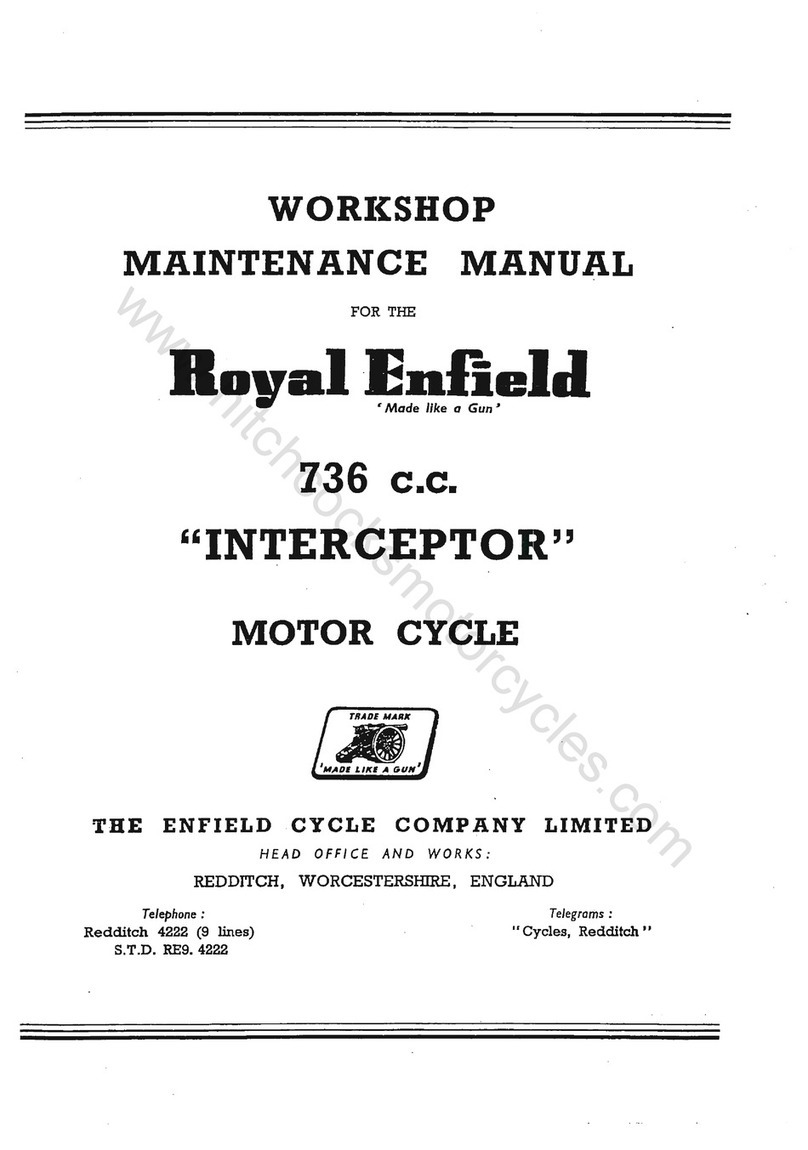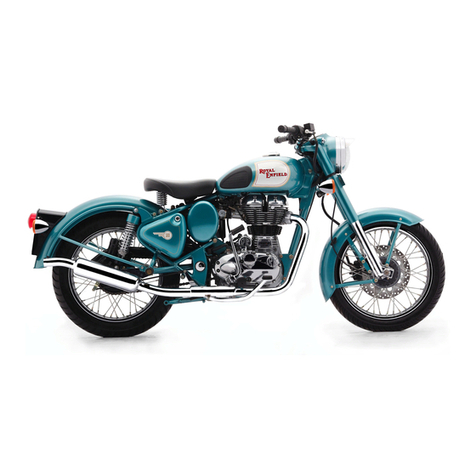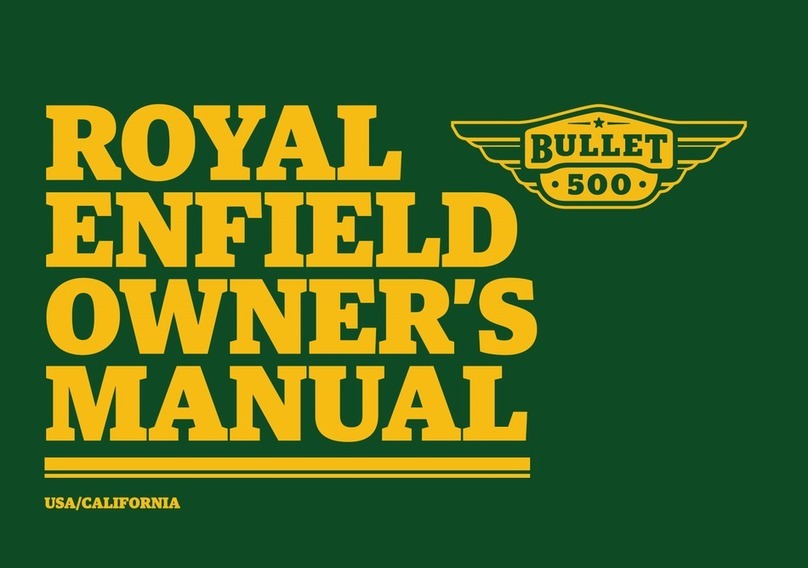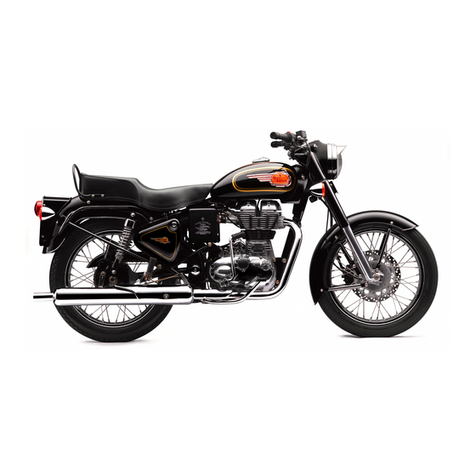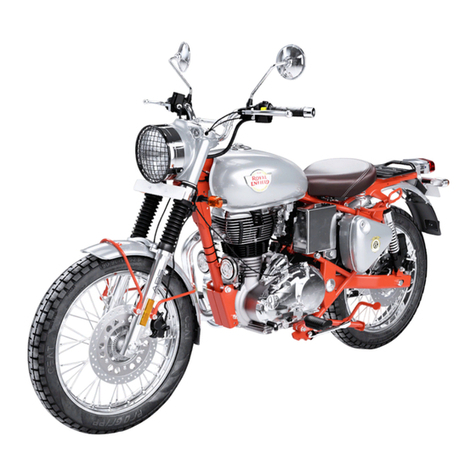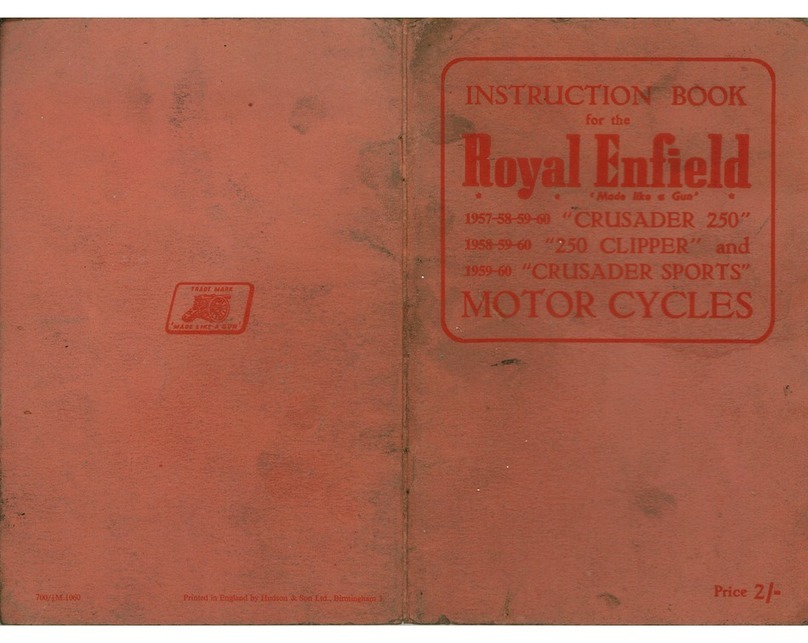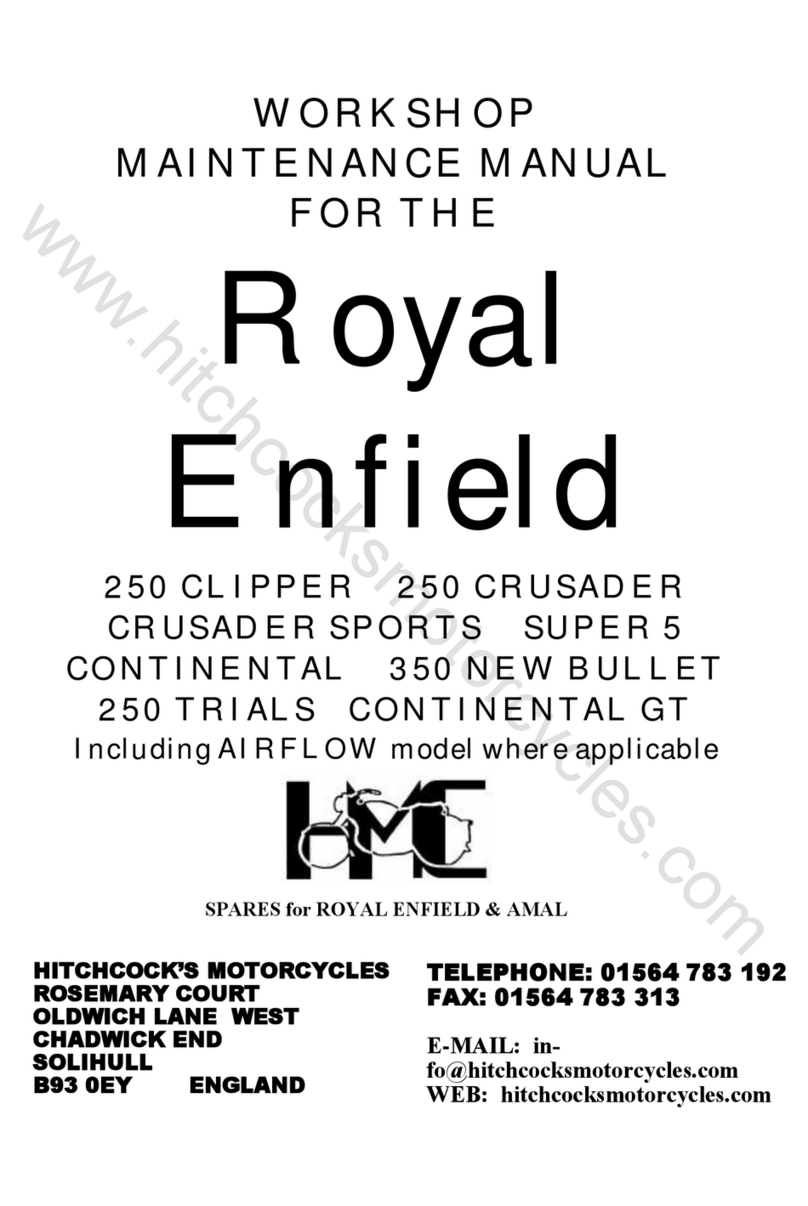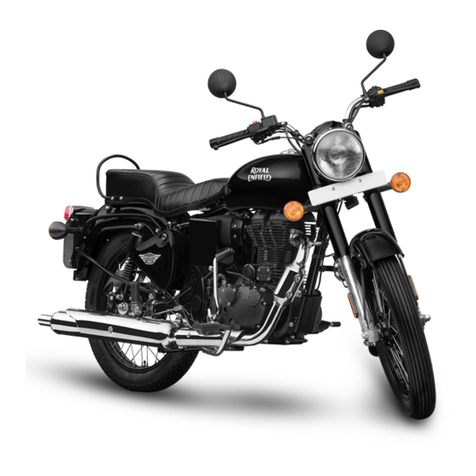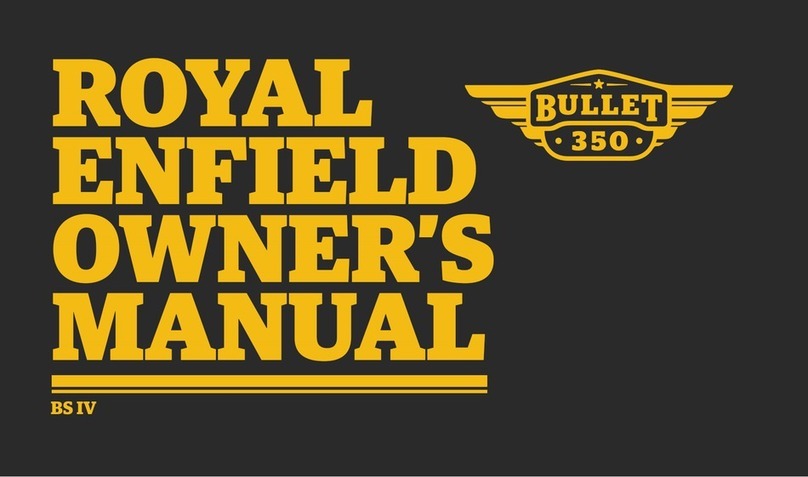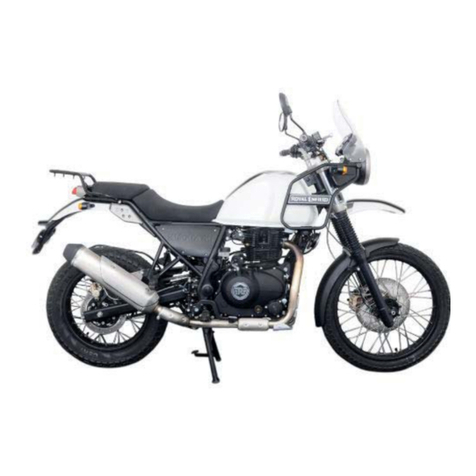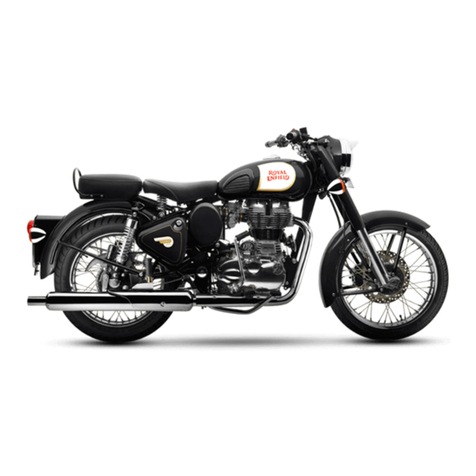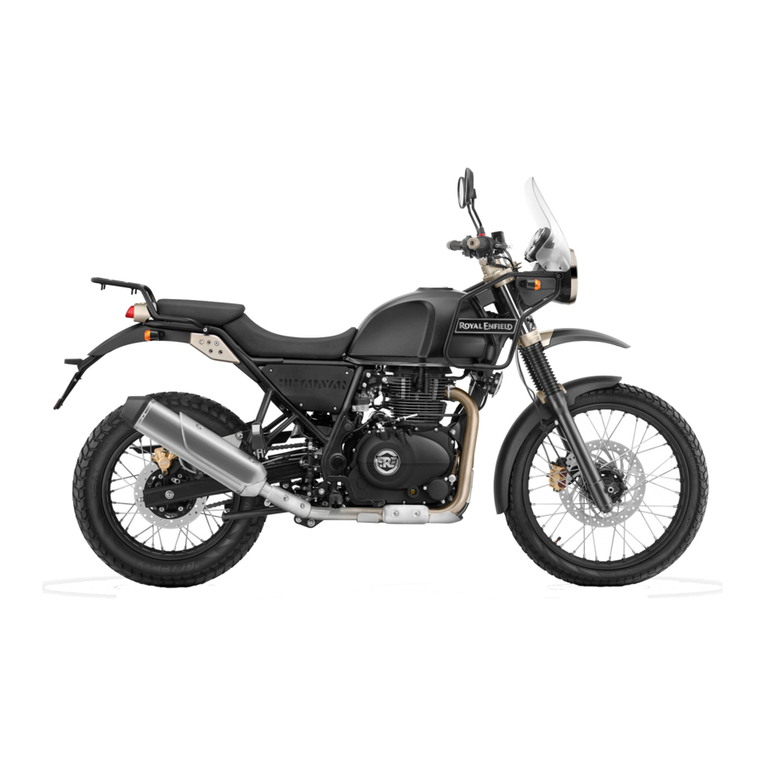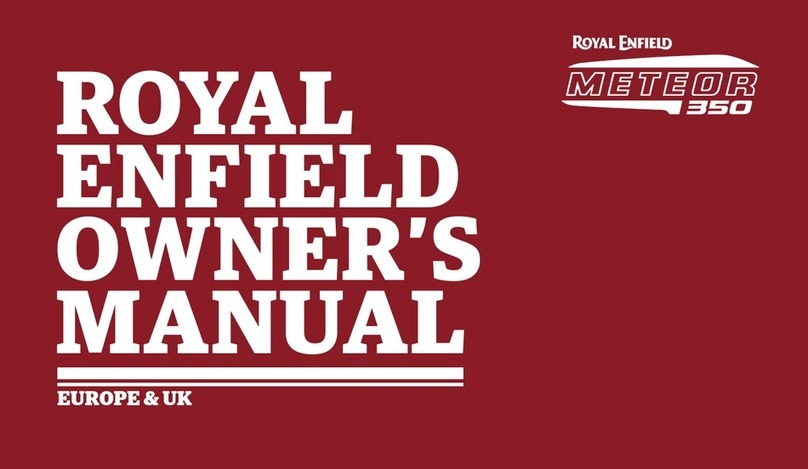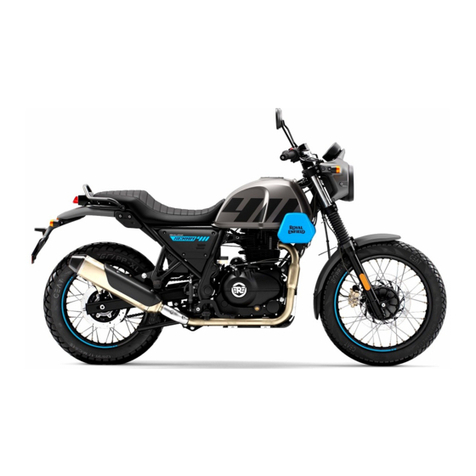FORWARD
HOWTHIS MANUAL CAMETO
BE
'There are twothings I'vebeen for most of my 6
1
years onthis planet. One
is
awanna-be technical writer; the
other a Royal Enfield Bullet fan. Other motorcycles, too, butthe first motorcycle Iwas able toget my hands on
(that could be made to run)
was an ex-WD 350 Royal Enfield Bullet
-
the CanadiadBritishArmy bike from WWII.
By that time, I had already learned that the second thing you have to have, after you acquire just about any piece
of machineryis agood manual. Unfortunately, I couldn't find any manual for my "new" motorcycle. The situation
was complicated somewhat by the fact that most of
it
came in a couple of cardboard boxes
-
itwas in a state of
"some assembly required."
The only book(s)
I
could find on the subject were one afficionado manual, which assumed awidespread and
general knowledge of motorcycles, and was a sort of pocket-sizecoffee-table magazine, called
Book
Of
The
Royal Enfield.
Itoffered up lots of esoteric information, such as what years the "famous pre-war EnfieldV-Twins"
were produced, butvery few specifics on my mundane little workhorse 350. The only other book I could find
that even mentioned Royal Enfields was the excellent, but notparticularly detailed due to its universal coverage,
the Nicholson Brothers'
Modern Motorcycling,
an early '50's edition.
This was only the first of many Royal Enfieldsthat seemed to come myway as ayoungenthusiast inVancouver,
BC, Canada in the '50's. Although there was only one Enfielddealer inVancouver ever, and him for only part of
one year, there were afew pre-"unit" Bullets
-
models
G
and12
-
and a half-dozen of the post-'53 swingarm
frame "unit" models, like the Indian-made 1956-2003350/500 bullets of today.
Although I owned a half-dozen Bulletsin The Day, I never did find a decent service manual. Most manufacturers
of British Motorcyclesin the '50's seemed toassume a high degree of mechanical ability onthe part of any owners,
dealers, ortheir mechanics. The only even modestly comprehensive Shop Manuals
I
ever ranacross were for
A]S/Matchless Singles (AMC) and for the Triumph Twins. These were, don'tforget, the days before Clymer,
Haynes, et al., and the only suppliers of manuals of any kindwere the factories themselves. The Royal Enfield
manualwas atoolbox-sized pamphlet,which contained afew of the most necessary things to know, if you could
read between the lines, and had enough basic mechanical know-how to be able to understandthem.
It
was
enough, though, and I worked myway through repair and
restoration of a number of "fixer-uppers," mostly but not
confined to Bullets, over the nextfew years.
I sold "Ralph," my last running Bullet
-
a 1957 MX350
"Moto Cross Bullet," which I had painstakinglyrestored in 196
afew years later while in college. Although afew years aftel
that, I got back into motorcycling
-
mostly dirt competition
for some time, finally back into street riding, mostly on
Triumph twins
-
I
never ran across another Bullet. Finally,
about 1975,l began to hear rumours that they had been
transplantedto India, and had been being made there, on
Your Author and Ralph, 1962
original Redditchtooling, since the late '50's. This got me
The Enfield
BULLET MANUAL
by
Pete
Snidal
O
2002
VI
